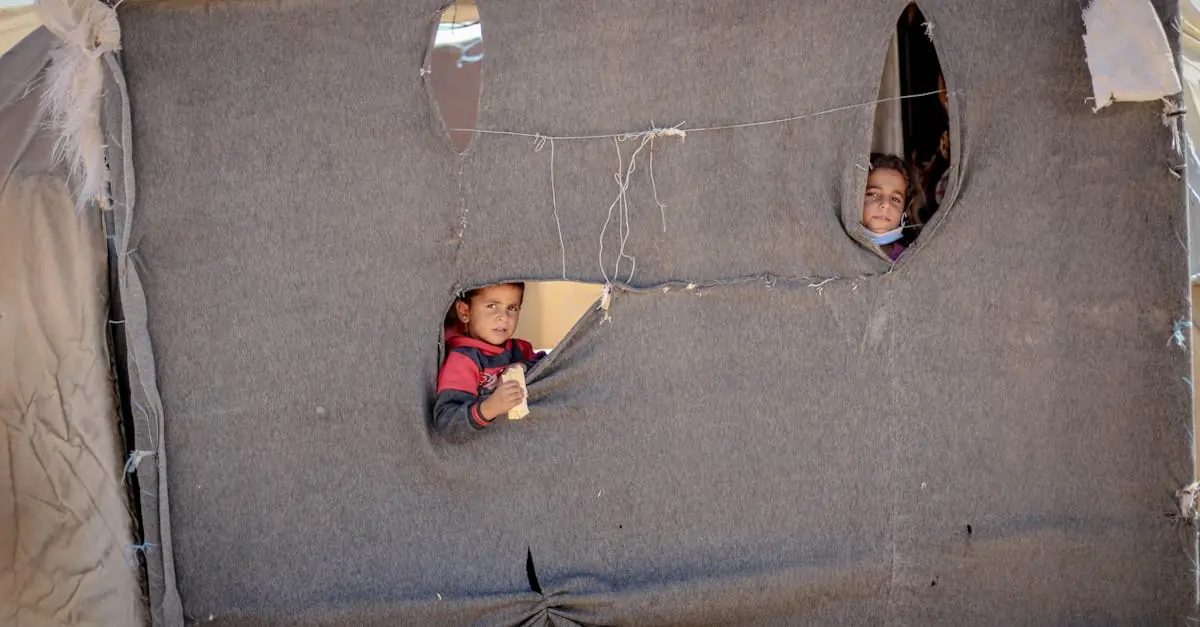As tensions rise around the globe, the chatter about World War III seems to be more than just idle gossip. With nations flexing their muscles and alliances forming like a high-stakes game of chess, it’s hard not to wonder if we’re on the brink of something monumental. But before you start stockpiling canned beans and building a bunker, let’s sift through the noise to find out what’s really happening.
Table of Contents
ToggleCurrent Global Tensions
Current global tensions have reached critical levels, raising concerns over the potential for World War III. Multiple nations engage in strategic maneuvers, showcasing the complex landscape of international relations.
Key Players Involved
China asserts influence in the South China Sea, claiming territorial rights against regional opposition. Russia continues military posturing near Ukraine, fueling anxiety among NATO member states. The United States strengthens alliances with partners in the Indo-Pacific region, enhancing military readiness. Iran pursues its nuclear ambitions, leading to increased scrutiny from Western nations. India navigates its relationships with both China and Pakistan, balancing regional security interests and diplomacy.
Recent Developments
Recent military exercises conducted by Russia and Belarus sparked alarm among neighboring countries, creating heightened alertness in Eastern Europe. The U.S. announced additional troop deployments to Eastern Europe, signaling commitment to NATO allies. Diplomatic efforts between the U.S. and China faced obstacles, as trade tensions and Taiwan’s status complicate negotiations. Cyberattacks attributed to state-sponsored actors raised concerns about national security and resilience. Ongoing clashes in the Middle East and Africa revealed the persistence of regional conflicts, contributing to the existing instability on a global scale.
Media Coverage of World War III News
Media coverage plays a vital role in shaping public perception of potential global conflicts such as World War III. Through various platforms, news outlets report on evolving tensions and military developments worldwide.
Traditional Media Outlets
Traditional media outlets like television news networks and major newspapers provide in-depth analyses of geopolitical events. They often rely on expert commentary, interviews, and live coverage to inform audiences about significant occurrences. For instance, CNN frequently updates viewers on U.S. troop movements and interviews military analysts about potential threats. The New York Times offers detailed articles that explore the ramifications of diplomatic maneuvers between countries like the U.S., China, and Russia. These established outlets strive for objectivity but also face challenges in presenting complex situations without inducing panic.
Social Media Influence
Social media platforms have transformed how information about World War III circulating worldwide. Feeds on platforms such as Twitter and Facebook disseminate real-time updates, allowing users to engage with breaking news instantly. Influencers and citizen journalists contribute to discussions, often sharing personal insights alongside official reports. For example, hashtags related to military exercises can quickly trend, amplifying awareness. Despite the rapid information flow, misinformation can spread just as swiftly, necessitating scrutiny of sources. Users must verify claims to avoid drawing erroneous conclusions about the state of global affairs.
Public Perception and Reactions
Public perception of potential conflicts like World War III reflects widespread anxiety among citizens. Concerns grow as media coverage amplifies discussions around global tensions, influencing how people respond to these issues.
Awareness and Concerns
Awareness of geopolitical dynamics has increased significantly in recent months. Many individuals express unease over military activities in Eastern Europe and the South China Sea. These developments raise questions about national security and international stability. Analysts note that citizens frequently look for trustworthy information to better understand the complexities involved. Information from credible sources helps to alleviate fears, yet misinformation often complicates public understanding. Consequently, critical thinking skills become essential as individuals navigate the flood of information online.
Protests and Support Movements
Protests have emerged in various regions, reflecting diverse perspectives on potential military engagements. Citizens join movements advocating for peace, urging governments to prioritize diplomacy over conflict. In contrast, some actively support military preparedness, believing it is necessary for national defense. Local organizations mobilize quickly, organizing rallies and social media campaigns. Various groups advocate for their ideals while attempting to sway public opinion. Collaboration amongst communities reinforces their messages on the global stage. Ultimately, these movements illustrate the complexities of public sentiment regarding military actions and their potential consequences.
Analysis of Potential Impact
The potential onset of World War III carries significant implications for nations and global society. Key areas of concern include economic consequences and humanitarian issues, which demand thorough examination.
Economic Consequences
A potential conflict would disrupt global economic stability. Supply chains, particularly in technology and energy sectors, could face severe interruptions. Increased military spending may divert resources from vital public services, affecting health care and education systems. Moreover, countries involved might experience inflation spikes due to scarcity of goods. Global trade might also suffer, as tariffs and sanctions could limit access to essential markets. The uncertainty surrounding conflict can lead to decreased foreign investments. Analysts predict that recessions may emerge in affected regions, bringing about widespread job loss.
Humanitarian Issues
Humanitarian crises often arise during armed conflicts. Displacement of populations becomes a grave concern, with millions potentially fleeing affected areas. Access to basic necessities, such as food, water, and medical care, might diminish dramatically. Refugee camps may arise, straining local economies and resources. Health crises, including the spread of disease, could escalate in overcrowded conditions. Children and vulnerable populations face heightened risks of abuse and exploitation. International organizations will likely struggle to provide adequate support in such chaotic environments. Understanding these humanitarian challenges remains essential in navigating global tensions.
Conclusion
The current state of global tensions underscores the fragility of international relations. As nations navigate complex dynamics and military posturing, the potential for conflict looms larger. Public perception is shaped significantly by media coverage which can amplify fears or provide clarity.
In an age of rapid information flow, discerning credible sources is crucial for understanding the true nature of these geopolitical challenges. With the potential consequences of a conflict being severe both economically and humanitarianly, it’s essential for individuals to stay informed and engaged. The path forward hinges on diplomacy and thoughtful discourse to prevent escalation and promote peace.




